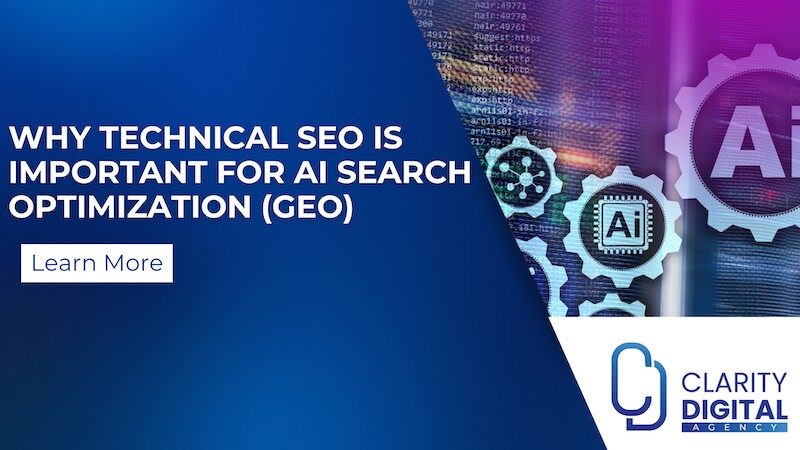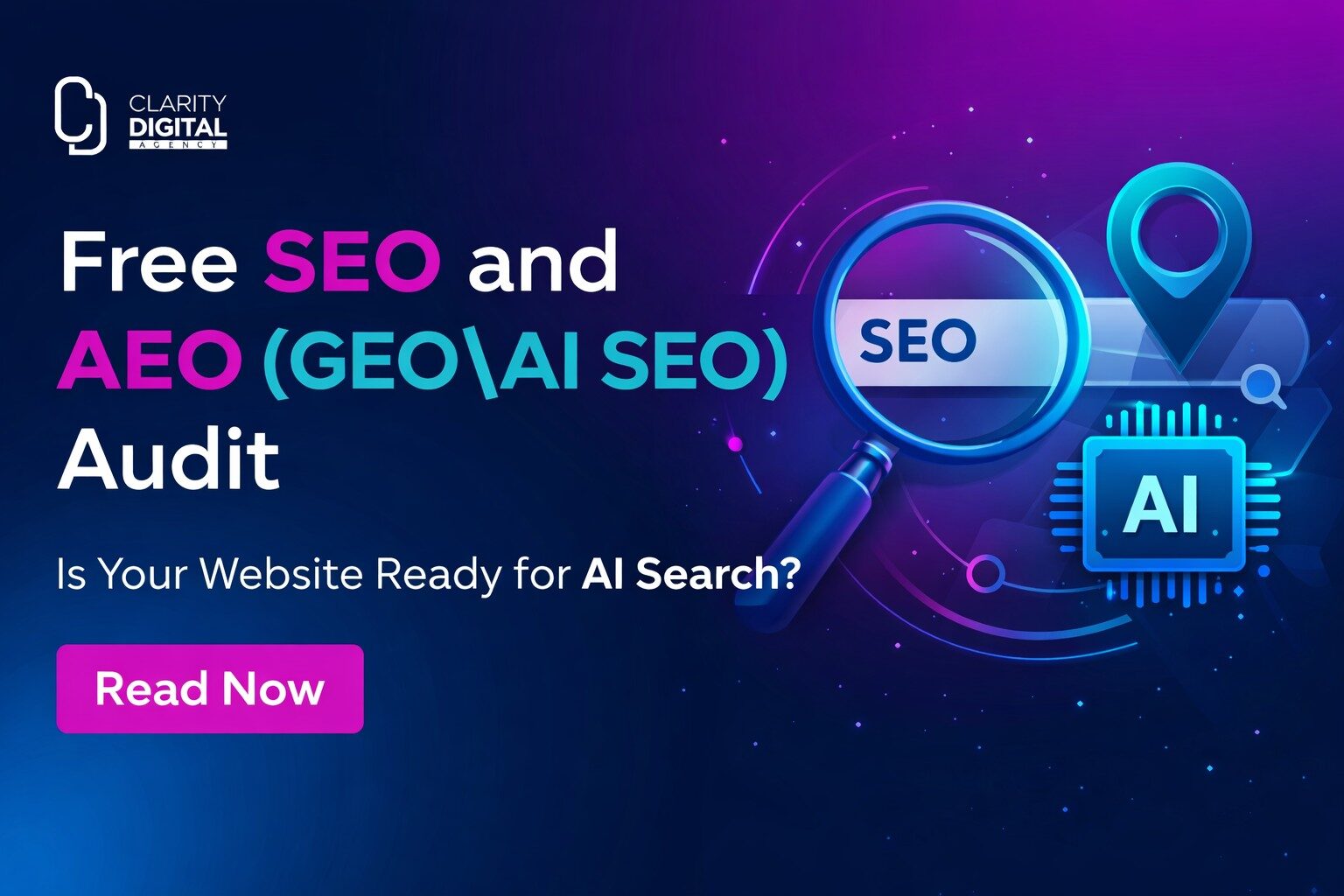The digital landscape is evolving. With the rise of large language models (LLMs) driving generative AI search platforms like Google’s AI Overviews, Perplexity, Copilot, and Gemini, technical SEO has gained new dimensions of importance. In this new context, “Generative Engine Optimization” (GEO) is emerging as a critical facet for brands seeking visibility in AI-generated answers changing the state of SEO.
Why Technical SEO Still Matters for LLMs & GEO
A technically sound website remains essential for traditional indexing and is even more crucial for LLM-powered engines. If your site cannot be crawled, rendered, or indexed efficiently, it will be invisible to both classic search engines and AI models sourcing web citations.
- Foundation for Visibility: Technical SEO lays the groundwork for your content to be found. AI models, just like traditional search engines, need to access and process your website’s information. If your site has technical barriers like broken links, slow loading times, or improper robots.txt configurations it prevents these powerful AI systems from ever seeing your content which directly impacts your chances of being included in AI-generated responses.
- Machine Interpretability: LLMs rely on structured, clean, and accessible technical elements to ingest, understand, and extract information. Good markup, logical information architecture, comprehensive sitemaps, and robust internal linking all improve discoverability for LLMs. When your website provides clear signals through structured data and a well-organized hierarchy, AI models can more accurately interpret the context and relevance of your content, increasing its likelihood of being cited.
- Content Inclusion in AI Answers: Unlike traditional SEO, which often prioritizes click-through rates and rankings, GEO focuses on being cited or surfaced within AI-generated responses. This means your content is directly providing the answer to a user’s query through an AI assistant. If technical SEO is lacking, critical pages may never reach LLMs for possible inclusion, regardless of the quality of the information they contain. Your content needs to be technically optimized to even be considered by these advanced systems.
- User Experience Signals: Fast, mobile-optimized, and secure websites not only benefit real users but also send strong positive signals to generative algorithms. These algorithms consider user experience metrics like page load speed, mobile responsiveness, and security (HTTPS) when evaluating which sources to cite. A poor user experience can lead to higher bounce rates and shorter dwell times, which AI models can interpret as a lack of relevance or quality, reducing your content’s visibility.
Key Technical SEO Elements for GEO
| Technical SEO Element | Impact for LLMs & GEO |
| Crawlability & Indexing | Ensures content is accessible to both search engines and LLM crawlers. If a page cannot be crawled, it cannot be indexed, making it invisible to AI models. |
| Site Architecture | Facilitates deep, logical exploration by bots and model-driven scrapers. A well-organized site helps AI understand content relationships and topical authority. |
| XML/HTML Sitemaps | Improves page discoverability and inclusion in reference pools. Sitemaps act as a roadmap for crawlers, ensuring all important pages are considered for indexing. |
| Page Speed & Mobile Readiness | Boosts user experience and eligibility for citation in answers. Faster sites are preferred by both users and AI algorithms, as they indicate a quality and accessible resource. |
| Structured Data & Schema | Helps LLMs correctly interpret entities, relationships, and facts in your content. This machine-readable data provides context, increasing the chances of rich results and AI citations. |
| Canonicalization & Duplicate Management | Prevents confusion for models parsing similar content versions. Clear canonical tags tell AI which version of a page is the preferred one, avoiding content dilution. |
| Renderability (SSR over JS-heavy) | Allows bots and LLMs to access content that might be hidden or difficult to parse in client-side environments. Server-side rendering ensures AI can see all your content. |
| HTTPS & Security Headers | Adds trust signals, which generative engines increasingly factor in. Secure sites protect user data and are seen as more authoritative by both users and AI algorithms. |
Distinctions: SEO vs. GEO
The landscape of search is broadening, and with it, the focus of optimization shifts. Understanding the nuances between traditional SEO and Generative Engine Optimization (GEO) is crucial for a forward-thinking digital strategy.
| Feature | SEO (Traditional) | GEO (Generative Engine Optimization) |
| Primary Goal | Rankings, CTR, Sessions | Citations in AI answers, passage inclusion |
| Key Metrics | Keywords, backlinks | Clarity, entity markup, data accuracy, schema depth |
| Visibility Objective | SERP presence | Mention/citation in LLM-generated responses |
“GEO rewards websites that are not only relevant and authoritative, but also technically robust and easy for AI engines to consume. Technical SEO is the foundation for both search and answer visibility.”
Practical Recommendations for Technical GEO
Achieving strong visibility in the era of generative AI requires a proactive approach to technical SEO. Implementing these recommendations will lay a solid foundation for your content to be discovered, understood, and cited by LLMs.
- Prioritize fast, mobile-first, and accessible site design. Speed and responsiveness are not just user experience factors; they are direct signals to AI algorithms about the quality and relevance of your site. Mobile-first indexing means that Google primarily uses the mobile version of your content for indexing and ranking. Ensure your site loads quickly on all devices and is designed with accessibility in mind.
- Maintain clean, descriptive URLs and structure. URLs should be clear, concise, and reflect the content of the page. A logical URL structure aids both users and AI crawlers in understanding your site’s organization and content hierarchy. Avoid overly long, keyword-stuffed, or dynamic URLs that can confuse AI models.
- Audit sitemaps and robots.txt to make sure important pages are indexable. Your sitemap is a roadmap for search engine crawlers and LLM bots, guiding them to all the important pages on your site. Robots.txt, on the other hand, tells crawlers which pages or sections of your site they should not access. Regularly review these files to ensure that valuable content is not inadvertently blocked from being indexed.
- Implement rich, accurate schema markup to aid knowledge extraction. Schema markup, a form of structured data, helps search engines and LLMs understand the context and meaning of your content. By adding schema for product pages, articles, local businesses, FAQs, and more, you make it easier for AI to extract facts and present your information in rich snippets or direct answers. Accuracy is paramount here; incorrect schema can be detrimental.
- Avoid obstacles to crawling and rendering favor server-side or hybrid rendering. Modern websites often rely heavily on JavaScript for dynamic content. However, client-side rendering can pose challenges for AI crawlers, as they may struggle to execute JavaScript to fully see and index your content. Server-side rendering (SSR) or a hybrid approach ensures that the content is fully rendered on the server before being sent to the browser, making it immediately visible to crawlers.
- Monitor Core Web Vitals and fix technical issues proactively. Core Web Vitals (CWV) are a set of metrics related to speed, responsiveness, and visual stability, which are key ranking signals. Regularly monitor your CWV performance through tools like Google Search Console and address any identified issues promptly. Proactive maintenance ensures your site remains in good standing with AI algorithms.
- Regularly audit for broken links, duplicate content, and orphaned pages. Broken links create dead ends for crawlers and frustrate users. Duplicate content can confuse AI models about which version of a page to prioritize, potentially diluting its authority. Orphaned pages are those that are not linked to from any other page on your site, making them difficult for crawlers to discover. Regular audits to identify and fix these issues are crucial for maintaining a healthy and discoverable website.
How AI Is Raising the Bar for Technical SEO
The advent of AI in search is not just an incremental change; it’s a fundamental shift that demands a higher standard for technical SEO.
- Demand for Clean Data: AI search engines, including those leveraging LLMs, need structured, well-labeled content to accurately extract facts and context. Sloppy site structure or missing schema can mean your most valuable assets are not surfaced by AI. AI thrives on clarity and precision.
- Deeper Analysis of User Experience: AI considers more elements beyond keywords, evaluating the technical and experiential aspects of your site (performance, accessibility, structure) to ensure optimal results for users. Your site is assessed holistically.
- Multiple AI Bots: It’s increasingly important to optimize for varied AI crawlers, each with distinct requirements, making thorough technical SEO and testing even more vital. What works for one AI model might not be optimal for another.
Summary Table: Technical SEO Elements Critical for AI Visibility
| Technical SEO Focus | Why It Matters for AI/LLM /GEO Visbility |
| Site speed & Core Web Vitals | Key ranking signal; poor speed harms AI visibility & user engagement. AI algorithms prioritize fast, responsive sites to provide a better user experience. |
| Structured data/schema | Enables AI to extract accurate facts, entities, and relationships. This structured information allows AI to present your content as direct answers or rich results, significantly boosting visibility. |
| Mobile optimization | AI search is mobile-first; non-responsive sites underperform. Most users access content on mobile devices, and AI reflects this preference in its ranking algorithms. |
| Site architecture/sitemaps | Enhances crawlability and content discoverability by AI bots. A logical site structure helps AI map out your content, ensuring no important pages are missed during the indexing process. |
| HTTPS/security | Trust and safety signals for both users and algorithms. Secure websites are viewed as more credible and are favored by AI systems that prioritize user safety. |
| Error-free code & metadata | Prevents crawl/interruption issues; ensures clean data input for LLMs. Technical errors can block AI from accessing or properly interpreting your content, leading to a loss of visibility. |
| Regular audits | Ongoing eligibility for indexation and ranking in evolving AI search. The AI landscape is dynamic, and consistent technical audits ensure your site remains optimized for continuous changes and improvements in AI algorithms. |
Technical SEO creates the essential framework that allows search engines to find, understand, and store your content. Without proper technical optimization, AI cannot properly assess your content. Once you get these technical elements right, you are setting yourself up for success regardless of how AI continues to evolve.
Neglecting technical SEO means risking invisibility even in the era of AI and LLM search. As both classic and generative search engines rely more on AI, the accuracy, speed, and structure of your technical foundation become stronger determinants of discoverability, ranking, and inclusion in AI-powered answers.
Influence of Site Architecture on AI Visibility
Site architecture the way your website’s pages are organized, linked, and presented has become a pivotal ranking factor in the AI-driven search era. Modern AI-powered search engines and large language models (LLMs) increasingly rely on technical site structure to efficiently crawl, understand, and prioritize web content. Strong site architecture not only benefits traditional search but also maximizes discoverability and citation in generative AI answers.
Core Ways Site Architecture Influences AI Visibility
- Improved Crawlability and Indexation: Logical, hierarchical site architecture ensures that both classic search engines and AI crawlers (including LLM bots) easily find and index all pages. Flat or confusing structures risk orphaning important content, diminishing your site’s visibility. If a crawler cannot find a page, AI cannot cite it.
- Clarifies Content Purpose for AI Models: Intent-driven, granular architecture makes it easier for AI to match search or prompt intent with the most relevant page. Focused content clusters (instead of broad or multipurpose pages) enhance interpretability for models and increase chances of inclusion in AI-generated results. AI seeks specific answers.
- Boosts Internal Linking and Authority Flow: Well-planned internal linking distributes page authority efficiently and signals content relationships. AI searchVialgorithms leverage these signals for ranking context and to understand topical relationships across your site. Strong internal linking reinforces expertise.
- Enhances User Experience (UX): Intuitive navigation keeps users engaged, lowers bounce rates, and generates positive engagement signals metrics increasingly used by AI algorithms as ranking factors. A good user experience translates to a better AI visibility.
- Supports Structured Data Implementation: Clear architecture facilitates the application of schema markup and structured data across the site, further aiding AI-driven engines in understanding and surfacing content in rich results and generative answers. This structured approach helps AI process information more effectively.
Key Technical Architecture Components for AI and LLM Rankings
| Component | AI Visibility Impact |
| Hierarchical Structure | Aids efficient crawling, mapping topic silos. A clear, logical hierarchy helps AI understand the relationships between different pieces of content on your site, enabling it to better categorize and retrieve information based on user queries. |
| Logical URL Design | Allows easy parsing and intent matching by AI. Clean, descriptive URLs provide immediate context to AI models about the content of a page, making it easier for them to determine relevance and provide accurate citations in generative answers. |
| Internal Linking | Distributes authority, highlights key content. A robust internal linking strategy helps AI discover new pages, understand the importance of certain content, and flow authority across your site. This reinforces topical expertise and improves the overall visibility of your content. |
| Use of Breadcrumbs | Clarifies site organization for bots and users. Breadcrumbs provide a clear path of navigation, which helps AI understand where a particular page fits within the overall structure of your website. This enhances the AI’s ability to interpret content hierarchy and deliver more precise results. |
| Clean Heading Hierarchies | Helps LLMs extract context and answer frameworks. Proper use of H1, H2, H3 tags, and so on, allows AI to quickly grasp the main topics and subtopics of a page. This structured presentation of content makes it easier for LLMs to extract key information and formulate comprehensive AI-generated responses. |
| Clustered Content Hubs | Aligns with intent-based AI surfacing. Organizing content into topical clusters or hubs around specific themes signals deep expertise to AI models. This approach helps AI understand the breadth and depth of your knowledge on a subject, making your content more likely to be cited as an authoritative source in generative answers. |
| Structured Data Usage | Boosts semantic understanding and ranking. The implementation of schema markup and other structured data formats provides AI with explicit information about the entities, relationships, and facts presented on your pages. This semantic clarity significantly enhances AI’s ability to interpret and utilize your content for rich results and direct answers in generative search environments. |
AI-Focused Technical GEO Best Practices
- Build “intent-driven” microstructures: each page should serve a clear, unique purpose, ideally mapped to a specific user intent or popular AI prompt. This level of specificity aids AI in direct answer generation.
- Use semantic HTML, consistent URL structures, and make all pages accessible within a few clicks from the homepage. Simplicity and consistency aid AI interpretation.
- Organize by content clusters with logical internal links. This signals topical authority and relevance to AI models.
- Implement schema markup across all content types to clarify purpose and entity relationships. This is crucial for machine readability.
- Regularly audit navigation, sitemaps, and crawlability for issues that could blind AI crawlers to sections of your site. Proactive maintenance is key.
AI Visibility Signals Enhanced by Strong Architecture
- Inclusion in AI Overviews: Optimized architecture heightens the chance your pages are cited or featured in generative AI quick answers, driving future traffic.
- Faster and Deeper Indexation: AI crawlers process, categorize, and retrieve your content more efficiently.
- Improved Topical Authority: Cohesive, topic-based clusters signal expertise, helping AI rank your pages higher for relevant queries.
- Better User Engagement Signals: Clean navigation and structure help users (and algorithms) find desired content quickly, boosting dwell time and satisfaction.
A scalable, well-structured site is not just good for users it is required for competitive visibility in an era when AI ranks and cites content based on how easily it can interpret, access, and match your information to user prompts. Investing in foundational site architecture is an essential first step for brands aiming to stay at the forefront of AI and LLM-powered discovery.
Frequently Asked Questions (FAQ)
What is Generative Engine Optimization (GEO)?
Generative Engine Optimization (GEO) is the practice of optimizing your website and content specifically for visibility in AI-generated answers and responses from large language models (LLMs) like Google’s AI Overviews, Perplexity, Copilot, and Gemini. Unlike traditional SEO, which focuses on organic rankings and click-through rates, GEO aims to get your content cited or directly included in the AI-generated summaries and answers that users receive. It emphasizes clarity, structured data, and technical robustness to make your content easily digestible and usable by AI.
How is GEO different from traditional SEO?
The core difference lies in the ultimate goal. Traditional SEO focuses on achieving high rankings in search engine results pages (SERPs) and driving clicks to your website. GEO, on the other hand, prioritizes the likelihood of your content being directly used or cited by an AI model in its generated response, often without requiring the user to click through to your site. This shifts the focus from keywords and backlinks as primary drivers to content clarity, entity understanding through schema, and the overall technical robustness that facilitates machine interpretation. While traditional SEO measures success in sessions and CTR, GEO looks at citations and inclusion in AI answers.
Why is technical SEO more important now with the rise of LLMs and AI search?
Technical SEO has always been crucial, but its importance is amplified with LLMs and AI search because these systems rely heavily on structured, accessible, and clean data. If your website has technical flaws such as poor crawlability, slow page speed, or a lack of structured data, AI models will struggle to efficiently ingest, understand, and extract information from your content. This directly impacts your content’s eligibility for inclusion in AI-generated answers. Technical SEO ensures that the foundation of your website is machine-readable and trustworthy, which is a prerequisite for any AI system to effectively use your content.
What are the most critical technical SEO elements for GEO?
The most critical technical SEO elements for GEO include:
- Crawlability and Indexing: Ensuring AI bots can access and add your content to their knowledge base.
- Site Architecture: A logical, hierarchical structure that helps AI understand content relationships.
- Structured Data (Schema Markup): Providing explicit information about your content in a machine-readable format.
- Page Speed and Mobile Readiness: Fast, responsive sites are prioritized by AI for user experience signals.
- Renderability: Ensuring content is fully accessible to AI crawlers, especially for JavaScript-heavy sites.
- HTTPS and Security: Building trust signals for both users and AI algorithms. These elements combine to create a robust, interpretable foundation for AI.
How does site architecture specifically influence AI visibility ?
A5: Site architecture profoundly influences AI visibility by impacting crawlability, content interpretation, and internal authority flow. A well-organized, hierarchical site structure makes it easy for AI crawlers to discover all your pages efficiently. It also helps AI models understand the relationships between different pieces of content, allowing them to better interpret topical authority and match user intent with the most relevant pages. Logical internal linking reinforces these relationships, signaling to AI which content is most important and authoritative. Furthermore, clean architecture supports the implementation of structured data, which is vital for AI’s semantic understanding.
Can neglecting technical SEO lead to my content being invisible to AI?
Yes, absolutely. Neglecting technical SEO creates barriers that prevent AI models from properly accessing, understanding, and processing your content. If your site cannot be crawled, if its content is not properly rendered, or if it lacks the structured data that AI relies on for interpretation, your content will likely remain invisible to generative AI platforms, regardless of its quality or relevance. Technical SEO is the gateway through which AI accesses your digital assets. Without it, your content is effectively in a black box for these advanced systems.
What role does user experience play in technical SEO for AI?
A7: User experience (UX) plays a significant role in technical SEO for AI because AI models increasingly incorporate UX signals into their evaluation of content. Technical elements like page speed, mobile responsiveness, and site security directly impact UX. A fast, secure, and easy-to-navigate website not only keeps human users engaged but also sends strong positive signals to AI algorithms. These algorithms interpret positive UX metrics such as low bounce rates and extended dwell times as indicators of high-quality, relevant content, making it more likely to be cited or prioritized in AI-generated responses.
How often should I audit my website for technical SEO issues related to GEO?
The frequency of technical SEO audits for GEO depends on your website’s size, the rate at which you publish new content, and the dynamic nature of the AI search landscape. For most businesses, a quarterly comprehensive technical audit is a good baseline. However, for larger sites with frequent content updates or those operating in highly competitive industries, monthly or bi-monthly smaller, focused audits might be necessary. It is also advisable to conduct an audit after any major website redesign or platform migration, as these can often introduce new technical issues that impact AI visibility. Regular monitoring of Core Web Vitals and crawl error reports from Google Search Console should be an ongoing daily or weekly activity.
Is there an AI Search (GEO) Optimization Checklist?
Yes, we at Clarity Digital created an AI search optimization (GEO) checklist,, we recommend you review and download. Besides technical items, it also focuses on other aspects of GEO (AI SEO) such as content, entities and off-page elements.
Strategic AI Readiness: Claim Your Free Assessment
The shift to AI-powered search is happening now, not tomorrow. If your brand isn’t technically optimized, you’re missing out on critical visibility in the new generative AI landscape. We understand the complexities involved in preparing your digital assets for LLMs and AI Overviews. Our team specializes in identifying the technical gaps that prevent AI from fully discovering and utilizing your content. Don’t let technical debt hold your brand back from being the definitive answer in AI search.
Reach out to us for a free assessment of your website’s AI readiness and discover how to solidify your foundation for the future of search.





